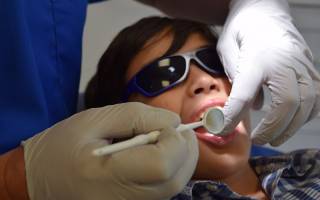Professor Anne Young, Professor Paul Ashley, Dr Wendy Xia, Professor Lambis Petridis, Dr Elaine Allan, Dr Nabih Alkhouri
Referrals of children to the Eastman Dental Hospital for tooth extraction due to caries has more than doubled in the past six years and this is the most likely reason for a child in the UK requiring a general anaesthetic. With the ban on the use of amalgam fillings in July 2018 and complexity of placement of the “white” composite alternative, referrals can only increase.The aim of this study is therefore to develop a composite that can be placed in general dental practice directly on disease affected dentine without the need for drill or anaesthetic. |
|---|
Professor Anne Young began working on this topic in 2000 funded by Schottlander dental company. From 2010 it was supported first by the Engineering and Physical Sciences Research Council (EPSRC), then by a NIHR Invention for Innovation Product Development Award and more recently by NIHR University College London Hospitals Biomedical Research Centre (BRC).
A new single step dental composite has been produced that can bond directly onto disease affected tooth structure without need for the current multiple, complex and time-consuming methods of tooth preparation. Through effective cavity sealing, it halts the growth of bacteria that start the decay process and reduces subsequent enzyme activated tooth degradation. An optimised formulation has recently been commercially manufactured, fully tested and packaged.
 Close
Close




